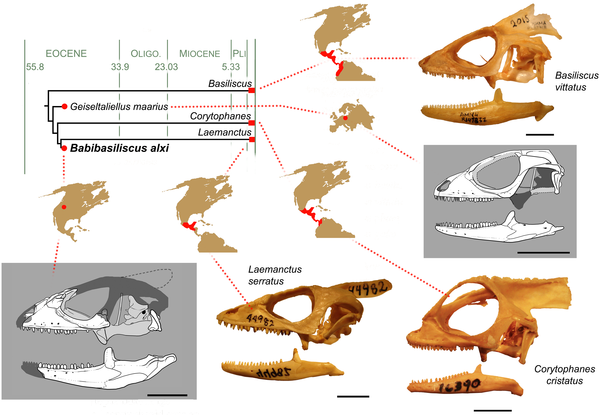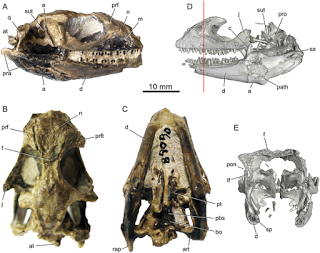| Online: | |
| Visits: | |
| Stories: |

| Story Views | |
| Now: | |
| Last Hour: | |
| Last 24 Hours: | |
| Total: | |
“Jesus Lizard” Walked on Water 48 Million Years Ago in Wyomng
Modern relatives of the Jesus lizard live in an area stretching from central Mexico to northern Colombia, flourishing in the higher temperatures found at the equator. Members of various animal, plant, fungal, and other clades currently confined to the tropics or subtropical areas are often found in fossil records at mid-to-high latitudes from warm periods in Earth history.
The 48-million-year-old fossil, recovered from the Bridger Formation in Wyoming, is the first description of a new species, named Babibasiliscus alxi by the author, and may represent the earliest clear member of the Jesus lizard group, Corytophanidae. This group, which includes iguanas and chameleons, remains poorly understood, due to the small number of fossils available for study.
Holotype (UWBM 89090) specimen for Babibasiliscus alxi nov. taxon. Photographs in (A) right lateral, (B) dorsal, and (C) ventral views. Digital reconstructions derived from HRXCT in (D) left lateral view and (E) transverse
The author suggests that the two-foot long casquehead lizard Babibasiliscus alxi, may have skimmed the surfaces of lush, watery habitats in Wyoming, which at the time probably had a climate matching today’s tropics.
“Given our current period of global climate fluctuation, looking to the fossil record offers an important opportunity to observe what is possible,” said Jack Conrad, “and may give us an idea of what to expect from our dynamic Earth.”
Contacts and sources:
Kayla Graham
PLoS ONE
Citation: Conrad JL (2015) A New Eocene Casquehead Lizard (Reptilia, Corytophanidae) from North America. PLoS ONE http://dx.plos.org/10.1371/journal.pone.0127900
Source: http://www.ineffableisland.com/2015/07/jesus-lizard-walked-on-water-48-million.html





